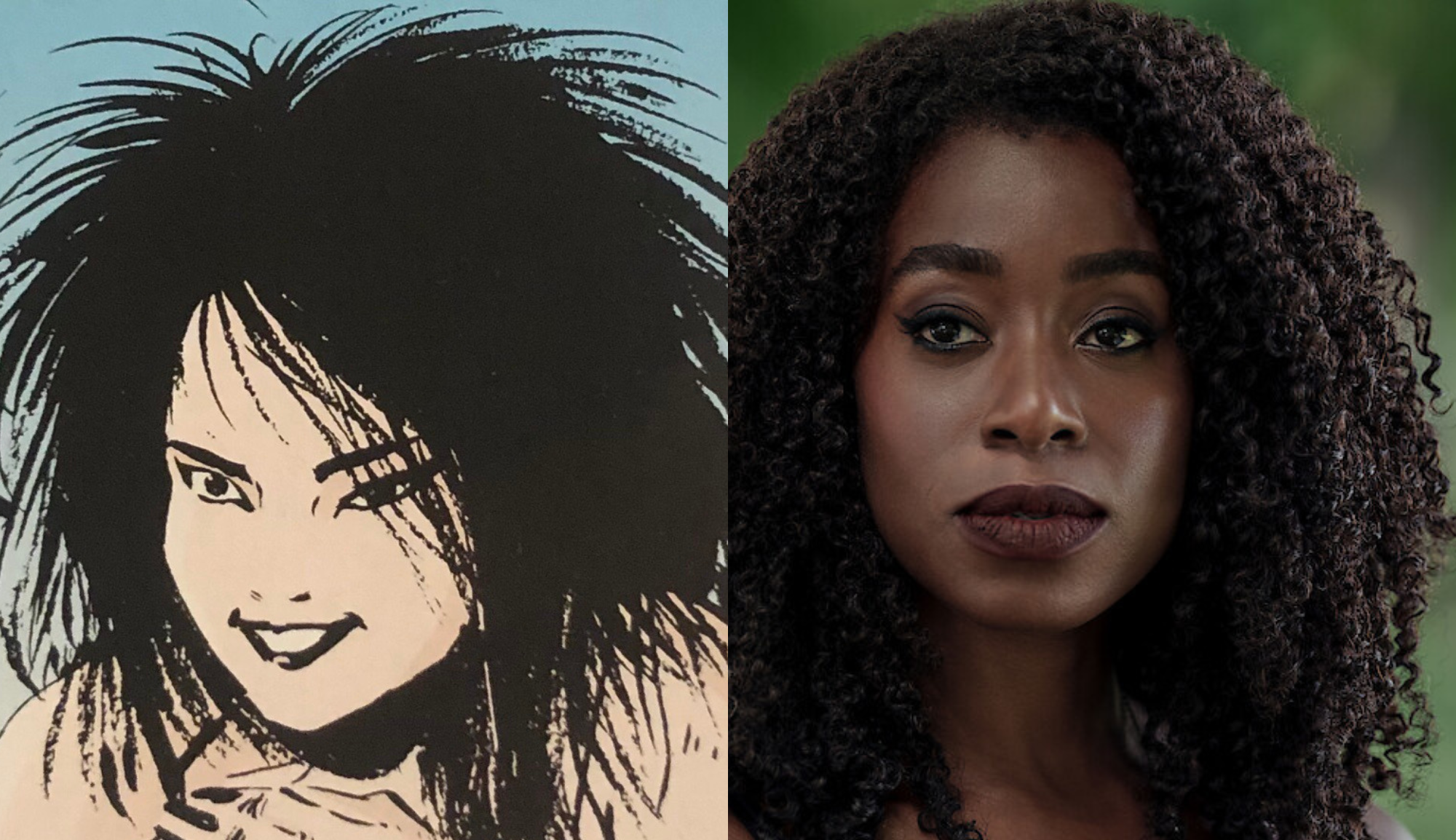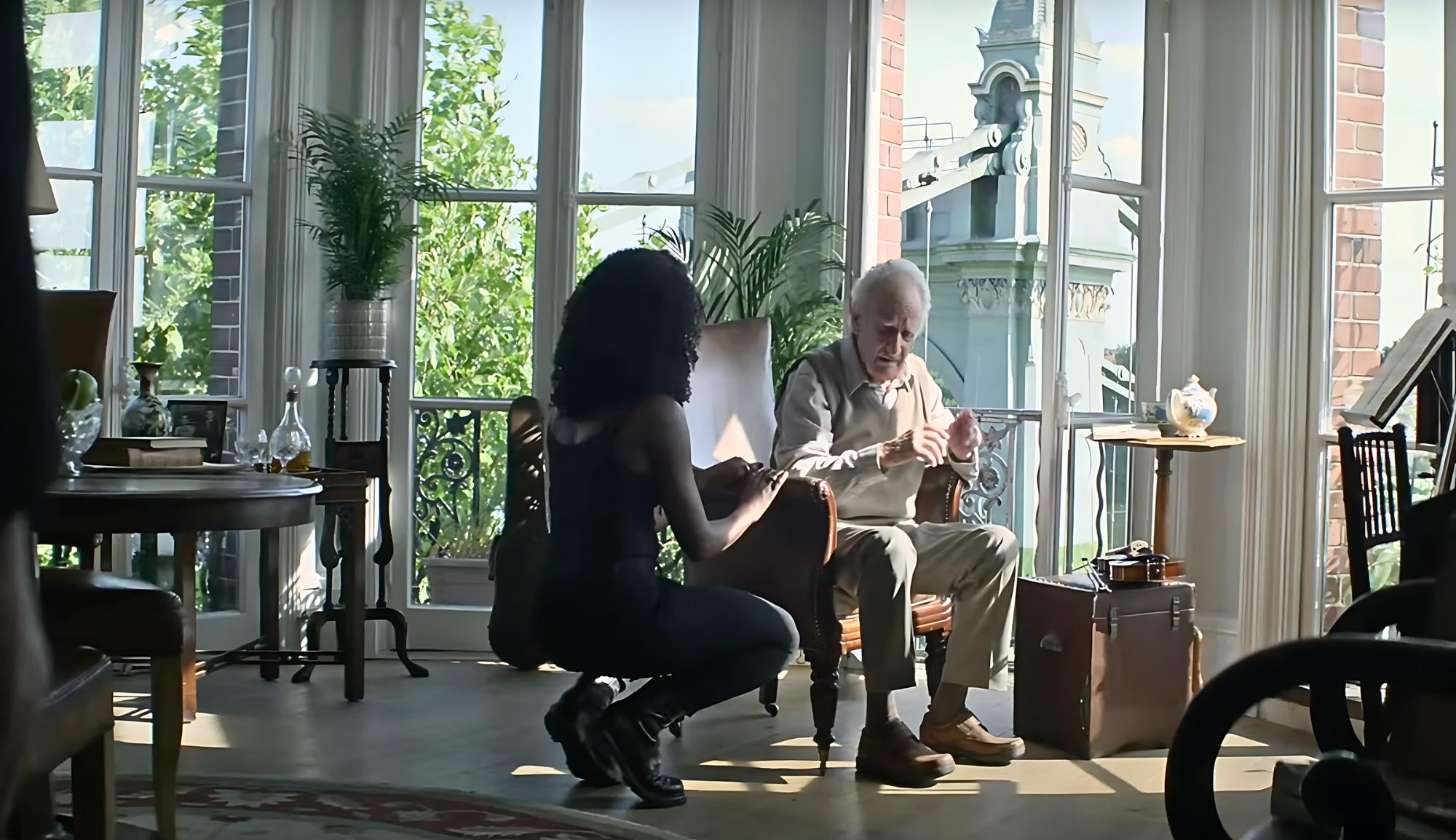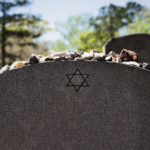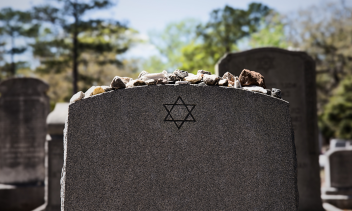Unlike many other cultures, Judaism does not really subscribe to a personification of Death. The Torah has no equivalent to the Ancient Greeks’ Thanatos or Christianity’s Pale Horseman. Instead, it is God who masters both life and death. In post-biblical times, the concept remains the same even as the imagery becomes more vivid.
Death earned an identity as Satan, the angel of death. The Talmud and other sources of Jewish folklore tell various tales of the angel of death, with some highlighting his cruelty while others focus on his mercy. But even then, as it is today, the angel of death is less conceived as a threatening demon wielding a sword over our necks and more as a tool of God who controls life and death, as well as a metaphor for ideas related to sin, punishment, and loss.
Unlike many other cultures, Judaism does not really subscribe to a personification of Death.
But there is something helpful in putting a face to the name— in taking such a mysterious, frightful, and universal encounter and making it somewhat more familiar. So if I had to personify death from a Jewish point of view in contemporary terms, I would not turn only to the Bible, Talmud, or Midrash. I would look to Jewish writer Neil Gaiman’s The Sandman, the comic book epic that ran for 75 issues and received a Netflix adaptation back in 2022. (Season 2 is “coming soon.”)
For the uninitiated, The Sandman follows the adventures of Dream, lord of the Dreamworld and the personification of our slumberous visions. Dream is one of seven Endless—a cross between a force of nature and a godlike being. Throughout Dream’s travels, readers and viewers are introduced to other members of the Endless family—including Destiny, Desire, and yes, Death.

Of all phenomena the Endless are based on, death is the one occurrence that every living being shares, not just humans. And yet, no one has any experience in death. (Unfortunately, we are not yet in the time of mechayeh ha-meitim, revival of the dead, so no one has been able to report back on what it is like to die.) By the time we become well-versed in the art of dying, it is too late. Once we take our final breaths, we are flying blind and solo. You might say that life is rather lonely for the dead.
The Fear of Death
Perhaps our collective inexperience with death is what makes it so scary. After all, hardly any of us will face death as it is in the movies—dramatic, violent, painful. Odds are that while the journey there may involve discomfort and sickness, we will go peacefully under the care of trained medical professionals. As the Talmud regales in Moed Katan 28a:
אֲמַר לֵיהּ: לִיתְחֲזֵי לִי מָר. אִתְחֲזִי לֵיהּ. אֲמַר לֵיהּ: הֲוָה לֵיהּ לְמָר צַעֲרָא? אֲמַר לֵיהּ: כְּמִישְׁחַל בִּנִיתָא מֵחֲלָבָא, וְאִי אָמַר לִי הַקָּדוֹשׁ בָּרוּךְ הוּא זִיל בְּהָהוּא עָלְמָא כִּד הֲוֵית — לָא בָּעֵינָא, דִּנְפִישׁ בִּיעֲתוּתֵיהּ.
Rava said to Rav Naḥman: “Master, appear to me in a dream after your death.”
And he appeared to him. Rava said to him: “Master, did you have pain in death?”
Rav Naḥman said to him: “Like the removal of hair from milk, which is a most gentle process. But nevertheless, were the Holy One, Blessed be He, to say to me: Go back to that world, the physical world, as you were, I would not want to go, for the fear of the Angel of Death is great. And I would not want to go through such a terrifying experience a second time.” (Emphasis my own.)
Or, as Norbert Elias puts more plainly in The Loneliness of the Dying:
It is not actually death itself that arouses fear and terror, but the anticipatory image of death… Terror and fear are aroused solely by the image of death in the consciousness of the living. For the dead there is neither fear nor joy.
In The Denial of Death, Ernest Becker roots this terror in what he labels the paradox of the “individual within the finite. Man has a symbolic identity that brings him sharply out of nature. He is a symbolic self, a creature with a name, a life history.” At the same time, though, “man is a worm and food for worms.” Many of us succeed in blocking out this awareness that, in the end, we “go back into the ground a few feet…to rot and disappear forever” with an armor of character, creations and relationships. But as we near the end of our lives, this armor begins to fade, and our childlike “impotence to avoid death” and “impotence to stand alone, firmly rooted on [our] own powers” comes surging up.
Death, in Becker’s view, leaves us with another paradox—we realize we cannot stand alone, and yet we are given no choice. No one can share our death. They can be there for the dying. But death is something we must all confront alone.
And yet, as Judaism teaches, death does not need to be a lonely experience. The Hebrew term for a funeral is levayah, which literally translates as “to accompany.” The laws related to Jewish death and mourning clearly show that Judaism understands the fear that comes from the loneliness of death, and the practices that are put in place are shaped in a way to create a sense of accompaniment for both the deceased and those in mourning.
This all starts the moment the individual dies, which as the midrash explains, is a vulnerable time for the deceased, as they have yet to reach their final resting place, both physical and spiritual. While the family prepares for the levayah a shomer, or “protector,” is appointed to watch over the body until it is ready for burial, providing respect for the body and comfort to the soul. At the levayah itself, loved ones and family members accompany the body with all present working together to fill the grave. Finally, in the 11 months after the death, family members say the Mourner’s Kaddish, both to keep the memory of the deceased alive and to elevate their standing in the World to Come.
And it is not just the dead Judaism refuses to leave alone. In the immediate aftermath of the funeral, mourners return home to find a meal prepared by their fellow community members. The shiva minyan shifts the center of the community—the house of prayer—from the synagogue to the mourner’s home. And of course, shiva calls bring friends, family, and even strangers together to offer a kind word and friendly face to those who find themselves at their lowest. The halachot of mourning are a hand extended in comfort, reminding the mourner that they do not have to face this tragedy alone.
Rejecting the Loneliness of Death
Gaiman is not observant (although he did take Hebrew and Bar Mitzvah lessons as a child), but The Sandman’s Death is a moving reflection of Judaism’s rejection of the loneliness of death. When we first meet Death in Issue #8 (and Episode 6), she is on her way to claim the soul of Harry, a Jewish man. Her entrance is not dramatic or tense; there is no crack of lightning or shroud of darkness. She approaches Harry in the light of a beautiful English day, greeting him by his first name and discussing his love of music with him. Her warm smile provides a sense of calm to the man, as it dawns on him that his time is up. She is respectful of his final wish, which is to say the Shema to honor his father. And, perhaps, most importantly, she offers him her hand to take in theirs, as she accompanies him to the Sunless Lands (the undefined place where the dead go in The Sandman).
Death, more than others, understands the sense of loneliness that comes from death. As the episode continues, we see her do this time and time again, and she notes how the loneliness of the experience began to weigh on her, only for her to realize that she was never alone.
Death: I used to think I had to do this by myself.
Dream: But you do.
Death: No. At the end, I’m there with them. I’m holding their hand and they’re holding mine. I’m not alone when I am doing my job.
So she does all she can to remove their sense of loneliness. The kind word, the warm smile, the extended hand. “At the end, each of us stands alone,” she tells Dream. “The Sunless Lands are far away and the journey is hard. Most of us will be glad for the company of a friend.”
And while it may be a bit unbecoming to describe God as a “friend,” Judaism teaches us no one really dies alone. God is there, waiting with an outstretched arm to guide us into the Sunless Lands.
Though I walk through the valley of the shadow of death,
I fear no harm, for You are with me;
Your rod and Your staff—they comfort me.
Sam Gelman is Senior Program Manager at the Yeshiva University Office of Student Life. He also writes about the intersection of Judaism and pop culture, and has published in Moment Magazine, TVLine, Shelfdust and CBR. On social media, he can be found on Twitter and Substack.







